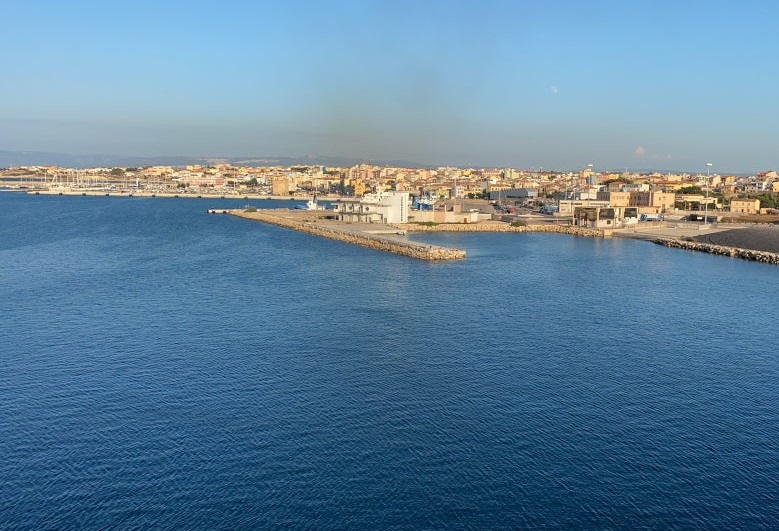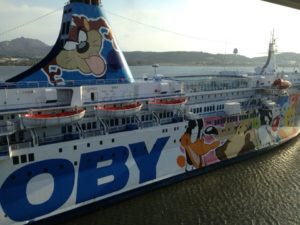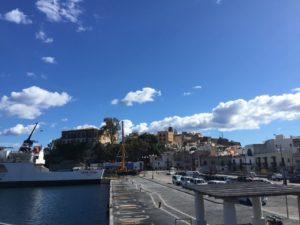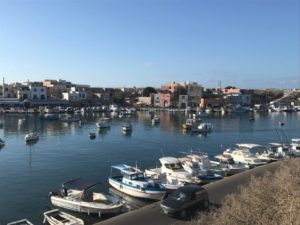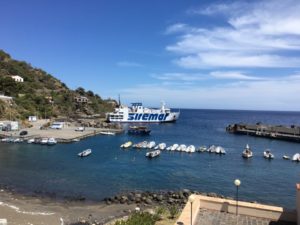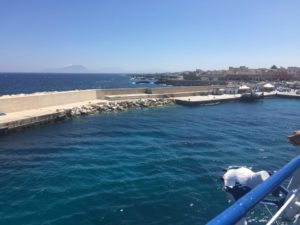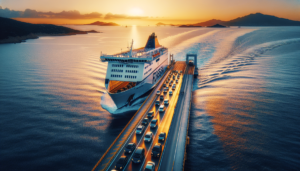An institutional memorandum of understanding was signed on March 15, 2023 which aims to develop a real intermodal center in the port area of Porto Torres, where an effective and efficient exchange node between all transport services is being implemented, both those on road and those on iron and sea.
Among the interventions that will be carried out by the end of the summer, there are the approach of the bus terminus of the Sardinian Transport Company to the port area, the creation of a pedestrian path that connects the port to the train station, the development of the intermodal passenger station and more.
The Councilor for Transport of the Autonomous Region of Sardinia, in addition to illustrating the planned interventions, highlighted the problems currently present in the seaport, while the Turritan mayor praised the protocol, emphasizing its strategic importance.
Protocol for the relaunch of the Porto Torres port
In the port of Porto Torres, transport is about to be rationalized through the creation of an intermodal passenger centre, thanks to the memorandum of understanding between the Region of Sardinia, the Municipality of Porto Torres, the Port System Authority of the Sardinian Sea, the Provincial Industrial Consortium of Sassari, Arst and Atp Sassari for the reorganization of transport services in the port area, signed on 15 March 2023.
By rationalizing transport services and transforming the port area into an intermodal passenger hub that promotes efficient and safe exchanges and encourages the use of collective transport, the intention is to develop an important exchange node.
The aforementioned memorandum of understanding is in fact aimed at enhancing the integration between the different modes of transport (road, rail and sea) and the urban, extra-urban, national and international connection services involving the Porto Torres node, having as its general objective the revitalization of the seaport.
The actions that will be carried out by the summer for the optimization of the port are the following:
- extension of the Arst (the Sardinian Regional Transport Company) lines towards the maritime station, creating the terminus with parking stalls in the immediate vicinity to allow immediate access to vehicles by passengers;
- construction of a pedestrian path to connect the maritime station with the Rfi railway station;
- closure of the road section of via Antonietta Bassu to the traffic of private vehicles to allow the Arst vehicles to complete the maneuvers with certain times;
- conversion of the use of the building from a maritime station to an intermodal passenger station and temporarily entrusting the management of the spaces to Arst;
- equipping the parking stalls for Arst vehicles near the maritime station, through interventions on the signs, with shelters for protection from atmospheric agents;
- redevelopment of the public lighting system in the area in front of the maritime station;
- removal of the fence between the municipal road network and the port areas near the maritime station;
- allocation for parking of the areas adjacent to the stairway to create an area equipped for modal exchange with individual transport.
Current situation of transport in the port area
In the area near the maritime station, as long as the interventions envisaged by the protocol do not materialize, passengers who have to embark or disembark at the docks can already use the shuttle services of the Port System Authority, which connect the center of Porto Torres, the ticket offices, the maritime station and the railway station with the port docks. The service is activated about an hour before the departure of the relative ship and can be used until the complete disembarkation of the arriving ships, with a frequency of about twenty minutes, traffic permitting. In addition to those at the docks, the shuttle buses make stops in the civic port (in front of the “Cormorano” bar) and, in the maritime station, in via Antonietta Bassu street, about one hundred meters from the railway station.
“At the moment – explained the regional councilor for Transport Antonio Moro – passengers who intend to transfer from one means of transport to another are forced to walk long, often unsafe routes. The maritime station, owned by the Municipality, is not adequately connected with the arrival and departure points of passengers using urban and extra-urban buses and it is therefore underused even if it is located in a barycentric position with respect to the railway station and the mooring docks of the ferries that serve the connections in a territorial continuity regime with the Peninsula and the regional connection with Asinara”.
“I thank councilor Moro – said the mayor of the municipality of the northern Sardinian metropolitan network Massimo Mulas – for the concreteness with which he took the issue head on. In a few months he managed to involve the institutional subjects who have competence in the field of mobility, reception and services in the port. They all responded with great willingness and a collaborative spirit because they all understood that it is no longer possible to postpone the relaunch of the port. It is therefore an important signal, which recognizes the centrality and role of the seaport: the services and opportunities are there, what will change compared to the past is that now the various structures dialogue and are available to work together. All of North West Sardinia, and its economy, are in great need of it. This protocol is important not only because it increases the quality of hospitality for tourists and travellers, but because it launches a broader and stronger message: no one thinks of downgrading our port, perhaps by using the constant weather alerts which often see ships being diverted to other destinations, also in view of the next call for maritime continuity. Today we strongly reiterate that the Porto Torres port has the history, strategic position and structures to still have a propulsive role for the whole island”.

